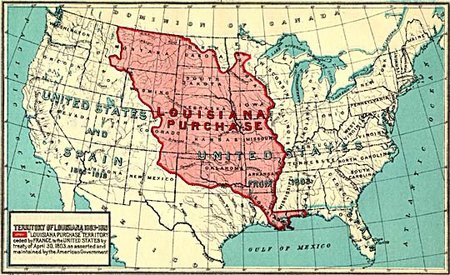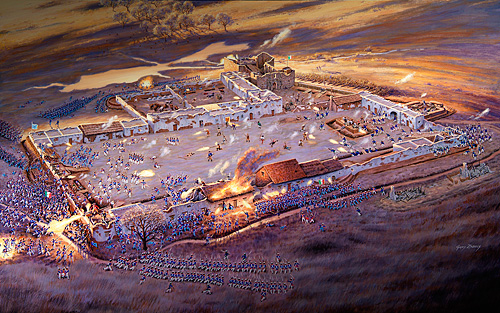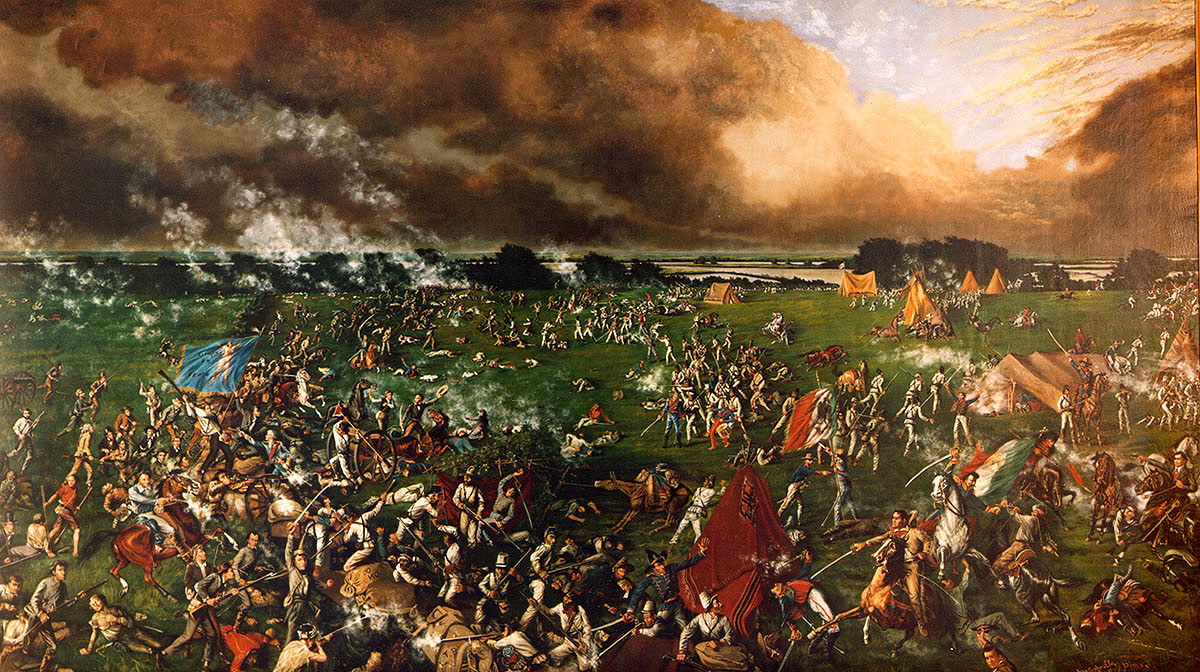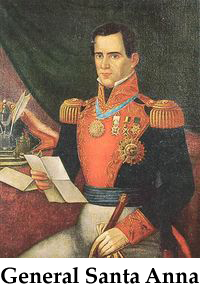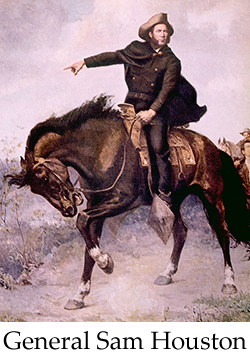Freemasonry In The West – Volume 1
In order to understand Freemasonry and its place in the old west, you first have to understand America’s expansion into the west, the politics of the time, the battles for independence, the modernization of transportation, and the small communities that became the large cities we know today. This is the first of many Digital Parchment editions that will explore Freemasonry In The West. We will begin our exploration into Freemasonry In The West by first exploring the early days and struggles of westward expansion, the rise of the nation of Texas (led by Freemasons such as James Bonham, Jim Bowie, David Crockett, Almaron Dickenson, Col. William Barrett Travis and General Sam Houston), and the Mexican-American War which all led to the acquisition of the land that would become the continental United States of America.
Westward Expansion – The Struggles of a Developing Nation
In 1803, President Thomas Jefferson purchased the territory of Louisiana from the French government for $15 million. The Louisiana Purchase stretched from the Mississippi River to the Rocky Mountains and from Canada to New Orleans, doubling the size of the United States. The Louisiana Purchase was the start of the westward expansion that became one of the defining themes of 19th-century American history. However, our American history is not without its dark moments, much of the 19th century was spent debating, legislating, and fighting over the rights of each state to declare as a slave state or a free state. The question of whether or not slavery would be allowed in the new western states shadowed every conversation about the frontier. In 1820, the Missouri Compromise had attempted to resolve this question: It had admitted Missouri to the union as a slave state and Maine as a free state, preserving the fragile balance in Congress. More important, it had stipulated that in the future, slavery would be prohibited north of the southern boundary of Missouri.
The Rise Of Texas – The Alamo & The Battle of San Jacinto
Led By Freemasons James Bonham, Jim Bowie, David Crockett, Almaron Dickenson, Col. William Barrett Travis and General Sam Houston
In order to understand Freemasonry and its place in the old west, you first have to understand America’s expansion into the west, the politics of the time, the battles for independence, the modernization of transportation, and the small communities that became the large cities we know today. This is the first of many Digital Parchment editions that will explore Freemasonry In The West. We will begin our exploration into Freemasonry In The West by first exploring the early days and struggles of westward expansion, the rise of the nation of Texas (led by Freemasons such as James Bonham, Jim Bowie, David Crockett, Almaron Dickenson, Col. William Barrett Travis and General Sam Houston), and the Mexican-American War which all led to the acquisition of the land that would become the continental United States of America.
The Battle Of The Alamo
The most famous battle of the Texas Revolution came about in San Antonio at a little mission called the Alamo. On March 6, 1836, one hundred and eighty-seven men under the command of Brother William Barrett Travis were defeated by several thousand Mexican soldiers under Santa Anna. In rooms where priests had prayed, bayonets clashed with Bowie Knives and swords. Musket and cannon fire tore into the Texan defenders. By dawn, all the Texan combatants lay dead. Their sacrifice, on March 6, 1836, would immortalize them as legends, and turn the Alamo grounds into Sacred Ground. Many months after the battle, the remains of the Alamo defenders were laid to rest. Presiding at the ceremony was Freemason Brother Juan Sequin. The words he spoke at the funeral speak to us even today:
“The spirit of liberty appears to be looking down from its elevated throne saying: Behold your Brothers: Crockett, Bowie, Travis. They preferred to die a thousand times rather than submit themselves to the tyrants yoke. Their sacrifices are worthy of inclusion in the pages of history. What a brilliant example for others to follow.”
One great example of Masonic Bonds can be told in the story of Mexican General (and Freemason) Santa Anna and his exchange with the widow Suzanna Dickenson (wife of Brother Almaron Dickenson) who was one of the few survivors at the Alamo. Quoted from the Grand Lodge of Texas:
“One of the few who survived the massacre at the Alamo was Mrs. Almaron Dickenson (Suzanna) who had been advised by her husband to display his Masonic apron over herself and the child during and after the battle. Santa Anna saw to her needs and even offered to adopt her child. She declined the offer declaring that she would “crawl and work her fingers to the bone to support the baby, but that she would rather see the child starve than given into the hands of the author of so much horror.””
So even in the face of bloodshed between armies Masonic bonds remain strong.
The Battle of San Jacinto
The Battle of San Jacinto took place in present day Harris County, Texas on April 21st, 1836. The Texas army was led by Freemason, General Sam Houston while the Mexican army was led by Freemason, General Antonio Lopez de Santa Anna. The battle lasted 18 minutes, 630 Mexican Soldiers were killed and 730 captured while only 9 Texans died. General Santa Anna who was also the President of Mexico was captured the following day under strict orders from General Houston to bring him in alive. It is said that General Santa Anna upon being brought before General Houston in fear of his life gave the masonic sign of distress. It is not known if this swayed General Houston in his decision but in the end General Santa Anna was kept alive and 3 weeks later signed a peace treaty that dictated that the Mexican army retreat, paving the way for the Republic of Texas to become an independent country.
In 1845 the Annexation of Texas brought Texas into the union as the 28th state of the United States of America. The very next year, the Oregon boundary dispute between the U.S. and Britain was settled with the signing of the Oregon Treaty. The British gained sole possession of the land north of the 49th parallel and all of Vancouver Island, with the United States receiving the territory south of that line.
In July, 1845, President James Polk, who had been elected on a platform of expansionism, ordered the commander of the U.S. Army in Texas, Zachary Taylor, to move his forces into the disputed lands that lay between the Nueces and Rio Grande rivers. In November, Polk dispatched Congressman John Slidell to Mexico with instructions to negotiate the purchase of the disputed areas along the Texas-Mexican border, and the territory comprising the present-day states of New Mexico and California. Following the failure of Slidell’s mission in May 1846, Polk used news of skirmishes inside disputed territory between Mexican troops and Taylor’s army to gain Congressional support for a declaration of war against Mexico. On May 13, 1846, the United States declared war on Mexico.
The Mexican-American War
The war began in 1846 and lasted until 1848. It was the fourth of the five major wars fought on American soil which was preceded by the Seven Years’ War, the American Revolutionary War and the War of 1812 and succeeded by the American Civil War. Combat operations lasted a year and a half, from the spring of 1846 to the fall of 1847. American forces quickly occupied Santa Fe de Nuevo México and Alta California Territory, then invaded parts of Northeastern Mexico and Northwest Mexico; meanwhile, the Pacific Squadron conducted a blockade, and took control of several garrisons on the Pacific coast farther south in Baja California Territory. A subsequent American force captured Mexico City, and the war ended in victory for the United States. The war proved to be relatively unpopular, in part because many Northerners objected to what they saw as a war to expand the “slaveocracy.” In 1846, Pennsylvania Congressman David Wilmot attached a proviso to a war-appropriations bill declaring that slavery should not be permitted in any part of the Mexican territory that the U.S. might acquire. Wilmot’s measure failed to pass, but it made explicit once again the sectional conflict that haunted the process of westward expansion.
The Treaty of Guadelupe Hidalgo
In 1848, the Treaty of Guadelupe Hidalgo ended the Mexican War, Under the terms of the treaty, Mexico ceded to the United States approximately 525,000 square miles (55% of its prewar territory) in exchange for a $15 million lump sum payment, and the assumption by the U.S. Government of up to $3.25 million worth of debts owed by Mexico to U.S. citizens.
These events brought within the control of the United States the future states of California, Nevada, New Mexico, Arizona, Utah, Washington, and Oregon, as well as portions of what would later become Oklahoma, Colorado, Kansas, Wyoming, and Montana.
The Building Blocks Of A Great Nation
The path to light can be found even in the darkest of times and though the beginnings of our nation and its westward expansion have roots in the battles and disputes that took place, we were able to move forward and build a great nation through hard work and sacrifice. Stay Tuned for our next edition of Digital Parchment where we will explore the building of the Transcontinental Railroad, the towns and cities that sprung up along the way, and the Masons that helped build those communities.
Outside Sources:
“Fremasonry and the Old West” Video Courtesy of Green Cheese Media Group, Inc., , September 17th, 2015. http://www.greencheesemedia.com/masonicwest/
“Why We Remember The Alamo” grandlodgeoftexas.org. The Grand Lodge of Texas, September 17th, 2015. http://grandlodgeoftexas.org
“Sam Houston and Santa Anna” grandlodgeoftexas.org. The Grand Lodge of Texas, September 17th, 2015. http://grandlodgeoftexas.org
“Westward Expansion” history.com. The History Channel, September 17th, 2015. http://www.history.com


